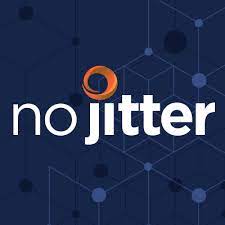Generative AI: The Topic of Conversation in UCaaS and CCaaSGenerative AI: The Topic of Conversation in UCaaS and CCaaS
In March 2023, Generative AI burst onto the keynote stage at Enterprise Connect. Since then, No Jitter’s spoken with many of the companies directly involved in the incorporation and implementation of AI and generative AI-based solution into unified communications and contact center platforms. This article summarizes those in-depth conversations.
November 7, 2023

At Enterprise Connect in March 2023, many companies – Microsoft, Google, Amazon, Zoom, Cisco Webex to name a few – debuted their artificial intelligence (AI) and generative AI capabilities. Some of that functionality already existed in their products while some was forthcoming. For No Jitter, the introduction of generative AI sparked an ongoing conversation in how that technology could, and perhaps should, be used for business-to-business and business-to-consumer communications.
Over the last several months, No Jitter (NJ) has spoken with many of the companies directly involved in the incorporation and implementation of AI and generative AI-based solutions unified communications and contact center platforms. Over the course of those conversations, multiple trends became apparent which include:
Using generative AI to create summaries and thus assist contact center agents during and after customer interactions. This helps them provide a better customer experience and save time on post-call wrap-up. Contact center managers can also benefit from AI-generated summaries of calls, trends, etc., across the entire contact center operation. This can help them identify issues that need to be addressed, provide targeted coaching, etc.
Using generative AI to streamline the creation of rote content and/or remove some of the “heavy lifting” from laborious knowledge-based processes, such as designing a conversational dialog flow complete with intents and entities.
Noticing the need for data security, guardrails, etc., to protect customers’ personal identifiable information (PII) and enterprises’ intellectual property, while ensuring that the generative AI-based solution is responsibly deployed so that it doesn’t veer into toxicity, hallucinations, etc.
Asking questions, at least, about the data used to train the models. Most vendors’ LLMs are proprietary and they will not allow customers to examine the training data. But, customers have the right to ask about it and hold the vendors’ accountable on how they use customer data (or not), how the vendor is reviewing its model(s) regarding bias, ethics, responsibility, etc.
Keeping “humans in the loop” to evaluate what the generative AI “engine” produces as a backstop against toxicity, hallucination, incorrect information, etc.
These are just a few of the key themes and trends that emerged from the various conversations NJ has had. Over the next few years, generative AI will no doubt continue dominating the headlines.
Cisco Webex
“I think this is an area where nobody has an answer right now.Obviously [Microsoft] has said, hey, with Azure AI, here's how we separate pieces. And I think some of the other foundational models are also trying to stand up similar concepts around what [data] stays and what goes, but at the end of the day, if a query has to get processed that query has to go somewhere, so at a minimum it's being seen. Whether it’s being stored and then reused for learning, I think that's up for debate.” – Lorrissa Horton
Cisco Webex was the first Conversation NJ had about of AI; it set the stage for what would come later – the different types of client-/device-side AI versus the “conversational” AI platforms versus the generative AI models that have since generated so much attention. Cisco Webex also prefigured the emphasis generative AI-based solution providers, and those companies incorporating Gen AI, would place on security, privacy, etc.
Conversations in Collaboration: Cisco Webex’s Lorrissa Horton on AI and Data Security
IntelePeer
“Generative AI has truly changed what we can do – it’s transformed that guided tour, if you will, to an open-ended exchange whereby our platform can extract intents out of the general purpose language used by any consumer and retrieve what their intent is. And then based on that, our system acts on that to define the appropriate action and appropriate desired outcome for the customer interaction.” – Frank Fawzi
IntelePeer’s solutions largely involve using chat bots and/or “virtual agents” to triage, contain or deflect customer interactions before they reach agents in the contact centers. Leveraging AI on those interactions can help increase the virtual agent’s ability to serve customers accurately and effectively, which leaves more complex interactions to the human agents.
Conversations in Collaboration: IntelePeer’s Frank Fawzi on Using AI In Front of The Contact Center
Calabrio
“If you're a manager in a contact center, and you want to figure out what's going on, you're probably going to – based on our research, at least – start your inquiry like all of us, with a search. And you'll search for phrases, for example. What we're envisioning is somebody could use this search function and we would give that manager all the interactions that use that phrase, but we would have already tagged everything with different categories. So, if they find what they're looking for, then they can easily run a report query for everything with that category and then continue their analysis from there.” – Joel Martin
Calabrio’s solutions address the contact center workforce with respect to scheduling, interaction benchmarking, and performance management. Calabrio is already using AI and machine learning (ML) to make those processes more efficient and accurate, but they are also incorporating generative AI to extract more value – e.g., a manager can use Gen AI to get a summary of customer interactions rather than reading a transcript or listening to the audio. This potentially frees up their time to provide more coaching and more targeted coaching, for example.
Conversations in Collaboration: Calabrio’s Joel Martins on How AI Boosts Contact Center Efficiency and Effectiveness
Amazon Connect
“When I talk to CIOs, they tell me they want to solve real world problems without putting their businesses at risk – which can happen when it comes to generative AI. There are challenges around accuracy, hallucinations, mistakes.” – Pasquale DeMaio
At the time NJ spoke with Amazon Connect, its contact center platform did not incorporate generative AI nor had the company publicly announced definitive plans to incorporate generative AI in its contact center solution. However, via existing AI-based capabilities around natural language understanding, recognition and processing (NLU/NLR/NLP), and transcription, Amazon Connect delivers assistive guidance to agents using its platform. This Conversation showed that existing contact center solutions do not necessarily require an immediate upgrade to generative AI. Amazon also emphasized the need to keep humans – the agents – in the loop.
Conversations in Collaboration: Amazon Connect’s Pasquale DeMaio Talks Agent Experience and AI
Google Cloud and Contact Center AI
“If you have a particular agent who is, for example, not very good at explaining a certain deal, you can imagine having these generative AI bots play the role of a trainerYou have it call that agent 10 times in a row and have it ask the agent to explain that deal. It becomes a very personalized experience that helps them become more confident and productive.” – Behshad Behzadi
Google researchers and their work are fundamental to what everyone calls generative AI. Google stressed the importance of security and how the generative AI solution must strictly adherence to the business processes and guardrails the organization implements. A conversation flow designer is a key way to enforce those business rules, but generate AI can also be used to streamline the creation of those conversational interfaces. Google also suggests that although generative AI-based chat- and/or voice-bots may be able to replace human agents in some use cases, large language models (LLMs) can be used to assist them during interactions and even play the role of a trainer.
Conversations in Collaboration: Google’s Behshad Behzadi Talks Responsible AI
Genesys
“We allow them to take in their own work specific to their own tenant – which nobody else sees – and gives them the ability to extract from all of their transcripts the “meaning” in the form of intent and utterances. Then they can go build a bot that [reflects] what their customers are actually asking for in all the phone conversations and digital conversations that they have powered by Genesys. Across our platform we've sprinkled [capabilities] that allow for you to generate the starting point with less steps and then also to learn from the results of trying to use that.” – Brett Weigl
In this conversation, the well-known CCaaS provider talked about how current AI implementations and generative AI can be used to improve the customer and agent experience. Genesys also emphasized how the two main categories of AI – predictive and generative – should be used where their capabilities match most closely the given use case. Genesys also talked about leveraging a LLM that is trained on a company’s own different large language models (LLMs) for those different use cases.
Conversations in Collaboration: Genesys’ Brett Weigl on How Generative AI Can Assist Contact Centers
Cognigy
“I'll mention something that I think is being completely disregarded by everyone right now. Cost. The cost of these models can be tremendous. One GPT4 query can – depending on the amount of tokens and context size – easily cost 10 cents or more. That is essentially what a whole conversation commonly costs now. If you do five GPT4 queries in a conversation – and that’s just for the generative AI – that’s 50 cents. That's crazy.” – Philipp Heltewig
Cognigy was the first No Jitter conversationalist to emphasize how the cost to the organization of accessing generative AI models must be considered. Generative AI can be used to streamline the conversational AI design, use it to provide agent assist and summaries, but the “holy grail” is having it power direct-to-customer conversations.
Conversations in Collaboration: Cognigy’s Philipp Heltewig on Orchestrating Generative AI’s Role in the Contact Center
ServiceNow
“We think that while the market has been well served in the “front office” with [various solutions], sometimes things need to span the middle and the back office.” – Terence Chesire
As a company that provides a wide range of solutions across multiple core business functions – IT, HR, service, etc. – ServiceNow describes itself as helping enterprises orchestrate tasks across their organization. They were the first company in this series that spoke directly to the emerging trend of unifying the frontline contact center with the middle and back offices – i.e., potentially connecting agents directly to the human resource within the organization who knows how to address the given issue. And, of course, there’s a wealth of automation, unified communications and generative AI solutions that can help with that.
Conversations in Collaboration: ServiceNow’s Terence Chesire on AI, Automation and Defining Business Processes
About the Author
You May Also Like





